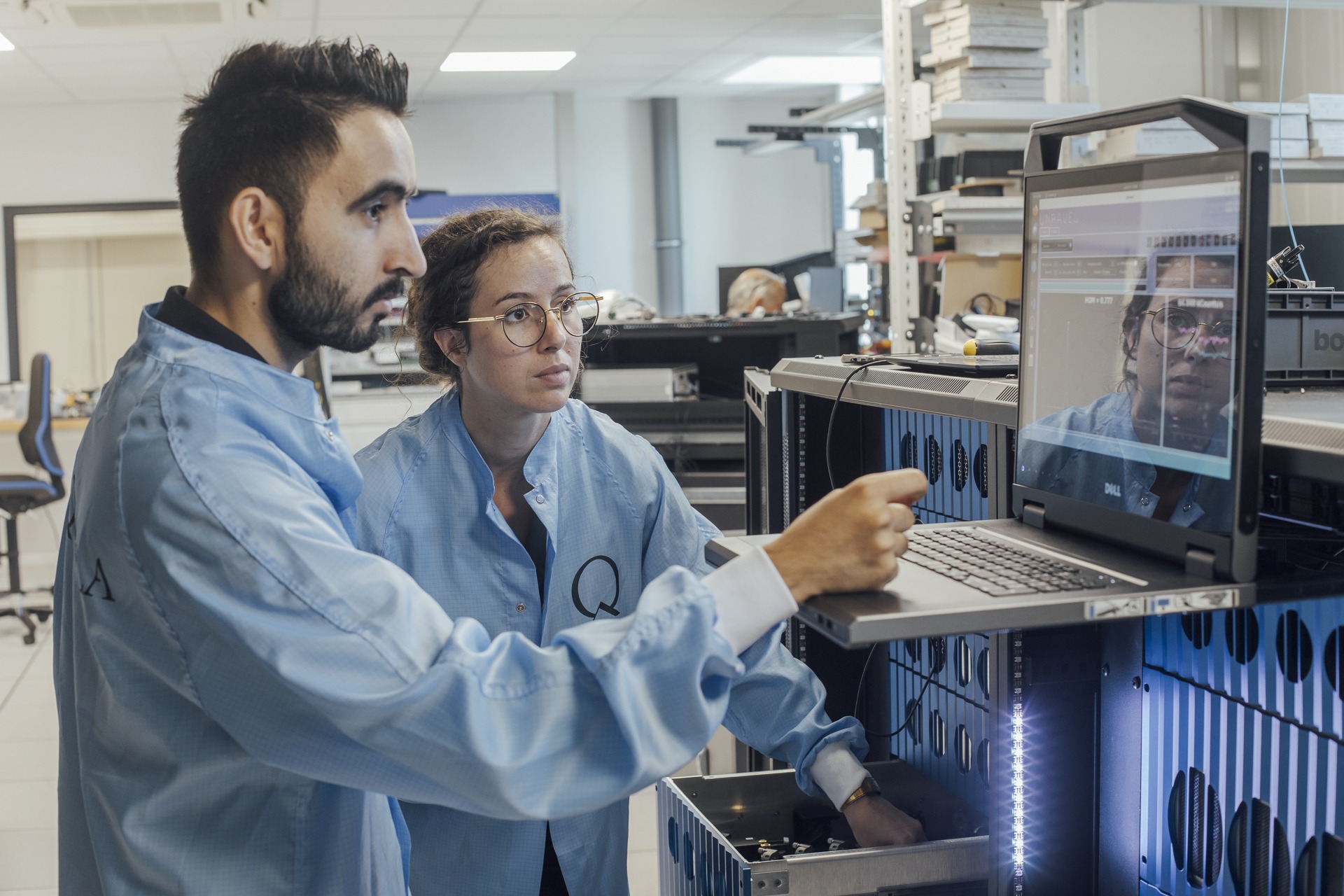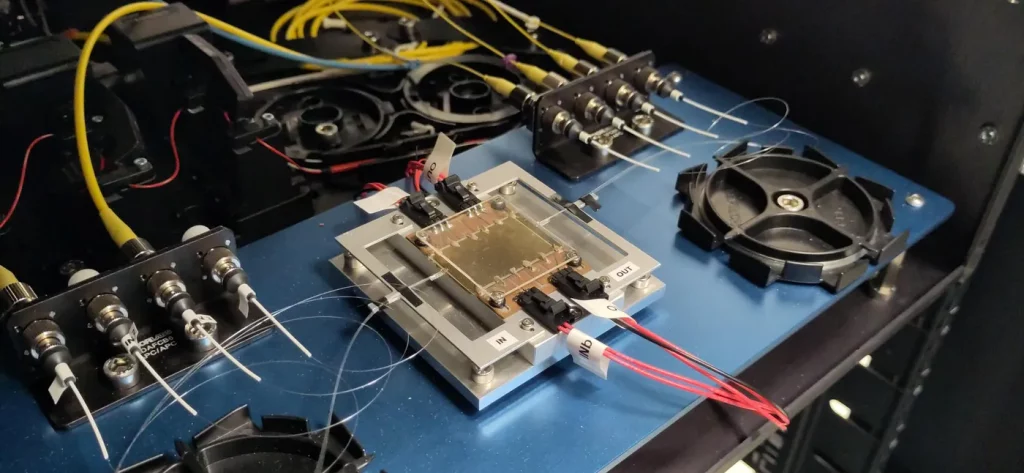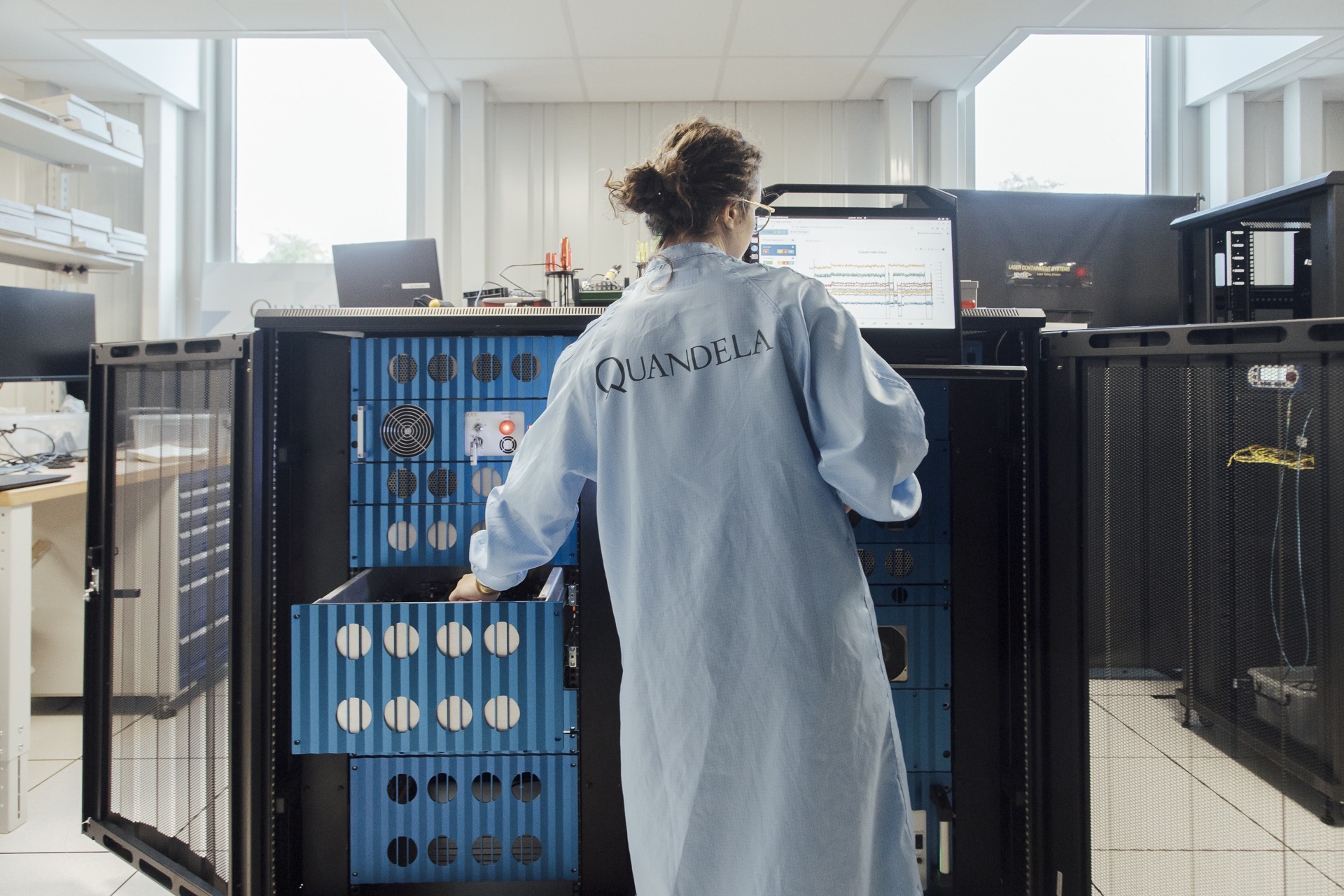Quantum entanglement is a fundamental quantum phenomenon where two or more particles become correlated in such a way that the quantum state of each particle cannot be described independently, even when separated by large distances. This surprising connection, famously described by Einstein as “spooky action at a distance,” is a crucial feature of quantum mechanics and a key resource in quantum technologies.
How Does Quantum Entanglement Work?
- Quantum Superposition: Before measurement, particles can exist in a superposition multiple states at once, and when many particles interact, their combined state can also be a superposition of possibilities.
- Quantum Correlation: Measurements on entangled particles are linked in such a way that the results are connected, even across distances, due to their shared quantum state.
- Quantum Non-locality: Entanglement effects persist regardless of distance
- Photonic Entanglement: In photonic systems, entanglement can be created through processes like spin-mediated photon-emission from quantum dots.
Entanglement in Quantum Computing and Physics
Quantum entanglement is crucial in quantum science and technology for a variety of reasons. For example:
- Quantum Algorithm Enhancement: Enables speedup in various quantum algorithms
- Quantum Communication Protocols: Forms the basis for quantum teleportation and secure communication
- Quantum Sensing and Metrology: Enhances the precision of quantum sensors beyond classical limits
- Fundamental Quantum Physics: Challenges classical notions of locality and realism
- Quantum Error Correction: Essential for creating fault-tolerant quantum computers
Cutting-Edge Research and Breakthroughs in Quantum Entanglement
Recent advancements in quantum entanglement research include:
- Long-distance Quantum Entanglement: Achieving entanglement over increasingly large distances
- Quantum Networks: Developing multi-node networks of entangled quantum systems
- Entanglement in Macroscopic Quantum Systems: Exploring entanglement in larger, more complex systems
- Quantum Entanglement Purification: Improving techniques to enhance the quality of entangled states
- Quantum Repeaters: Creating devices to extend the range of entanglement-based communication
- On-Chip Entanglement Generation: Developing integrated photonic circuits for efficient entanglement creation, a key focus in our work at Quandela
Frequently Asked Questions About Quantum Entanglement
- Can quantum entanglement be used for faster-than-light communication? No, while entanglement effects are instantaneous, they cannot be used to transmit information faster than light due to the no-communication theorem. This fundamental limitation preserves causality in quantum mechanics.
- How long can quantum entanglement be maintained in real-world conditions? The duration of entanglement varies widely depending on the system and environment, ranging from nanoseconds to hours in some carefully controlled experiments. In photonic systems, like those we work with at Quandela, entanglement can be maintained over long distances due to the low interaction of photons with their environment.
- Is quantum entanglement only a quantum phenomenon, or does it have classical analogues? Quantum entanglement is a uniquely quantum phenomenon with no classical analog. It is one of the key features that distinguishes quantum mechanics from classical physics, leading to capabilities not present in the classical world.
- How is entanglement created in photonic quantum computing systems? In photonic quantum computing, such as the systems we develop at Quandela, entanglement is often created through processes like spin-mediated photon emission or using specialized photonic circuits. These methods generate pairs or groups of photons that are quantum mechanically entangled, which can then be used for quantum information processing.
- What are the main challenges in using entanglement for practical quantum computing? Key challenges include maintaining entanglement for sufficient durations, efficiently generating high-quality entangled states, and manipulating entangled systems without introducing errors. At Quandela, we’re addressing these challenges through advanced photonic circuit design and precise control techniques.



